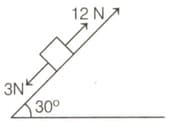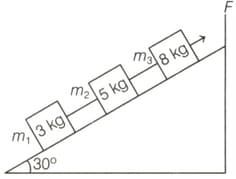D. C. Pandey Solutions for Chapter: Laws of Motion, Exercise 1: Excercise 1
D. C. Pandey Physics Solutions for Exercise - D. C. Pandey Solutions for Chapter: Laws of Motion, Exercise 1: Excercise 1
Attempt the free practice questions on Chapter 5: Laws of Motion, Exercise 1: Excercise 1 with hints and solutions to strengthen your understanding. Complete Study Pack for Engineering Entrances Objective Physics Vol 1 solutions are prepared by Experienced Embibe Experts.
Questions from D. C. Pandey Solutions for Chapter: Laws of Motion, Exercise 1: Excercise 1 with Hints & Solutions
A mass of is suspended by a rope of length , from the ceiling. A force is applied horizontally at the mid-point of the rope such that the top half of the rope makes an angle of with the vertical. Then, equals (Take, and assume the rope to be massless)
A block of mass is pushed in case and pulled in case , by a force , making an angle of with the horizontal, as shown in the figures. The coefficient of friction between the block, the floor is . The difference between the accelerations of the block, in case and case will be (Take, )

A mass of is suspended vertically by a rope from the roof. When a horizontal force is applied on the mass, the rope deviated at an angle of at the roof point. If the suspended mass is at equilibrium, the magnitude of the force applied is (Take, )
When a maximum force of is applied on a body kept on rough inclined plane of shown in the figure, then body remains stationary. The maximum external force up the inclined plane that does not move the block is . The coefficient of static friction between the block and the plane is [Take, ]

The force required to move a body up a rough inclined plane is double the force required to prevent the body from sliding down the plane. If the angle of inclination of the plane is , then the coefficient of friction is
Three blocks are connected by massless strings on a frictionless inclined plane of as shown in the figure. A force of is applied upward along the incline to mass causing an upward motion of the blocks. What is the acceleration of the blocks? (Assume, acceleration due to gravity, )

